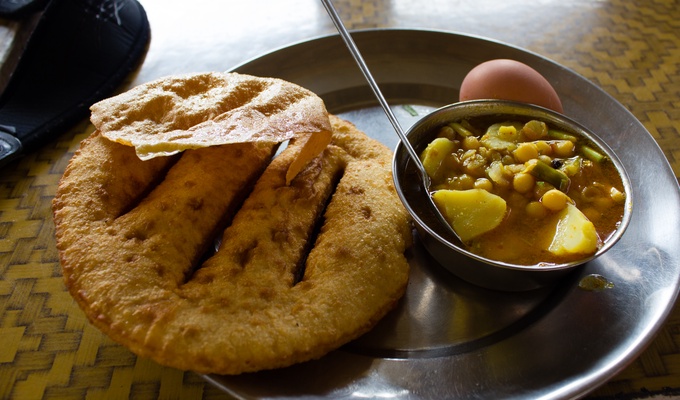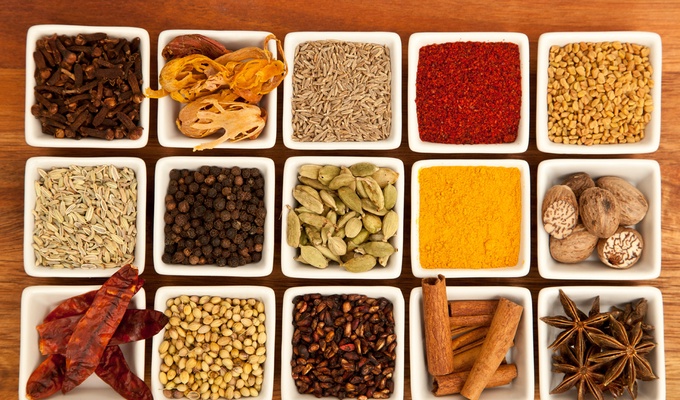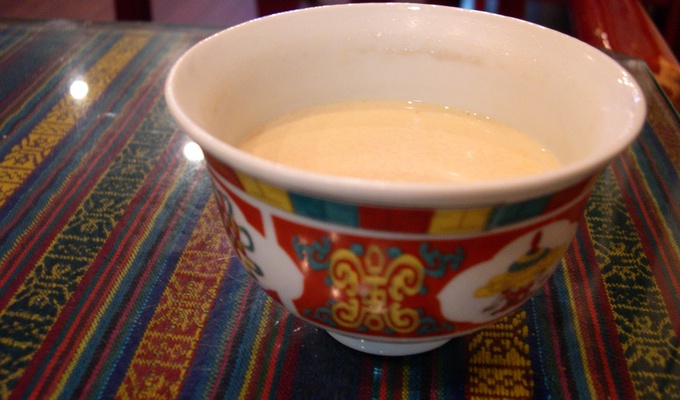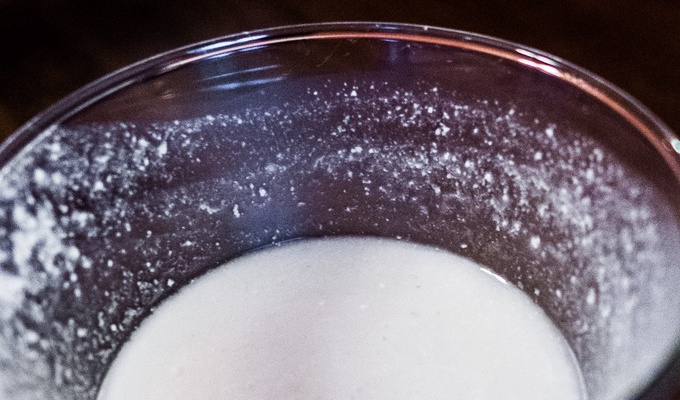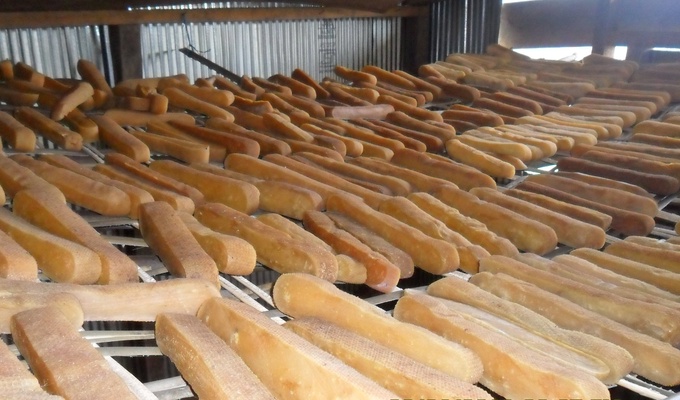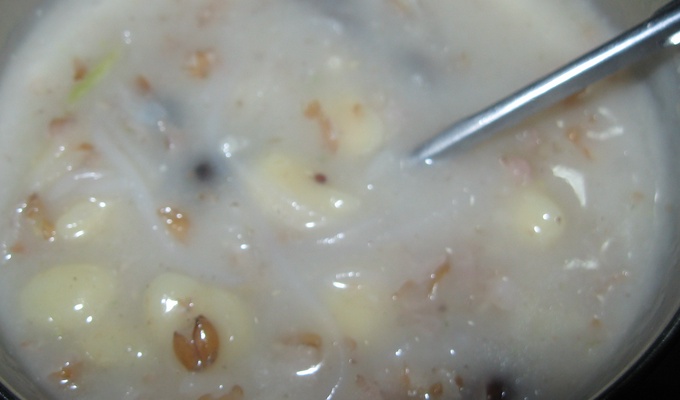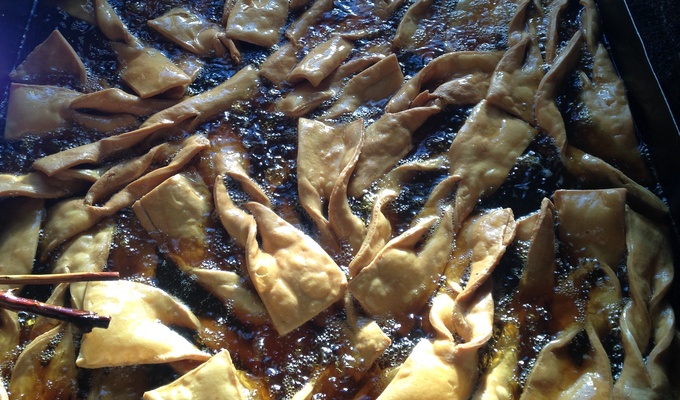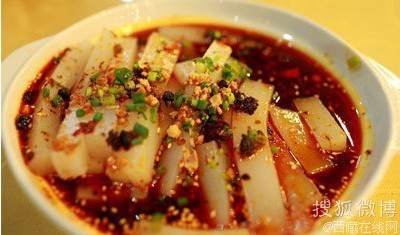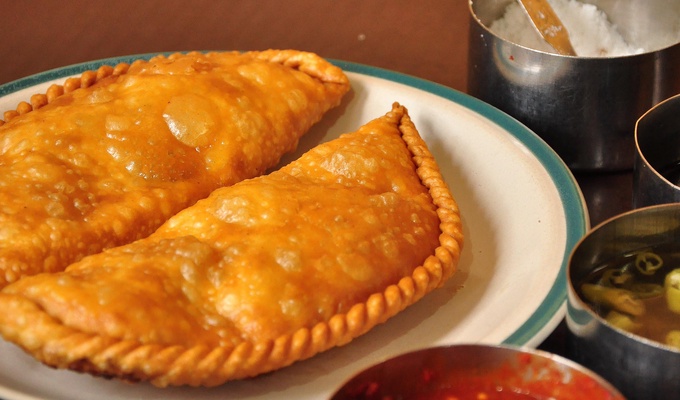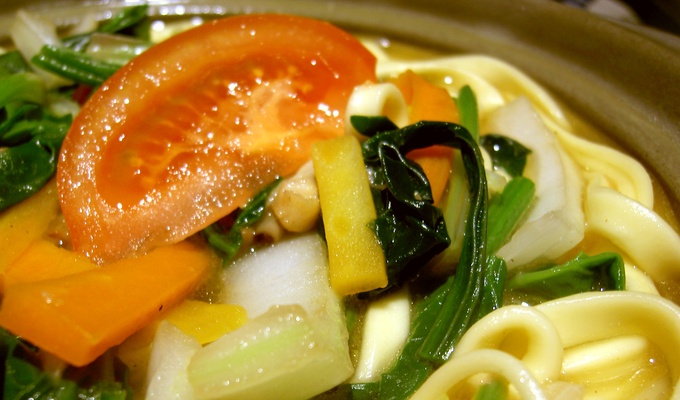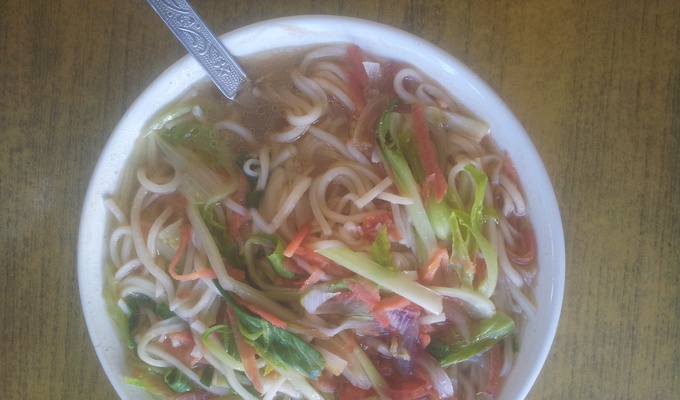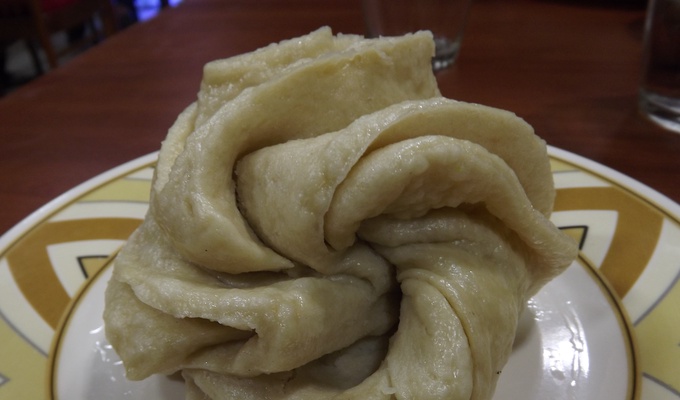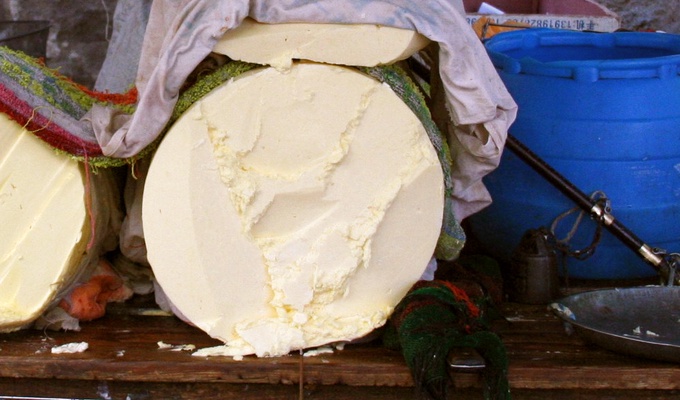Tibetan cuisine includes the culinary traditions and practices and its peoples. The cuisine reflects the Tibetan landscape of mountains and plateaus and includes influences from neighbors . It is known for its use of noodles, goat, yak, mutton, dumplings, cheese, butter, yogurt, and soups. Vegetarianism has been debated by religious practitioners since the 11th century but is not prevalent due to the difficulty of growing vegetables, and cultural traditions promoting consumption of meat.
Crops must be able to grow at high altitudes, although a few areas are at low enough altitude to grow crops such as rice, oranges, bananas and lemons. The most important crop is barley. Flour milled from roasted barley, called tsampa, is the staple food of Tibet, as well as Sha Phaley (meat and cabbage in bread). Balep is Tibetan bread eaten for breakfast and lunch. Various other types of balep bread and fried pies are consumed. Thukpa is a dinner staple consisting of vegetables, meat, and noodles of various shapes in broth. Tibetan cuisine is traditionally served with bamboo chopsticks, in contrast to other Himalayan cuisines, which are eaten by hand. Mustard seeds are cultivated and feature heavily in its cuisine.
Outside of Tibet, Tibetan cuisine is consumed in the Indian states of Ladakh, Sikkim, and Arunachal Pradesh, northern regions of Nepal such as Mustang and by Tibetan diaspora communities.
In larger Tibetan towns and cities, many restaurants now serve Sichuan-style Han Chinese food. Western imports and fusion dishes, such as fried yak and chips, are also popular. Nevertheless, many small restaurants serving traditional Tibetan dishes persist in both cities and the countryside.
